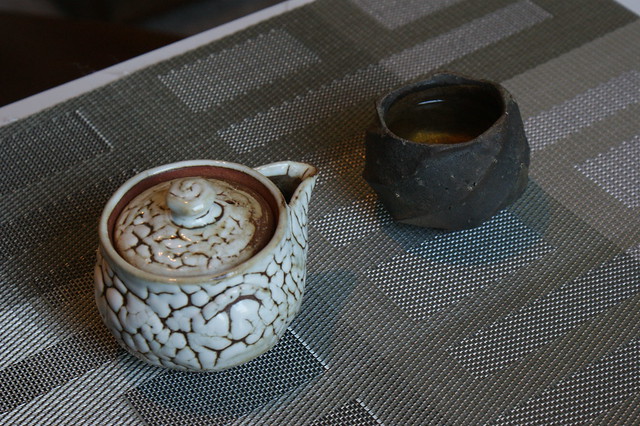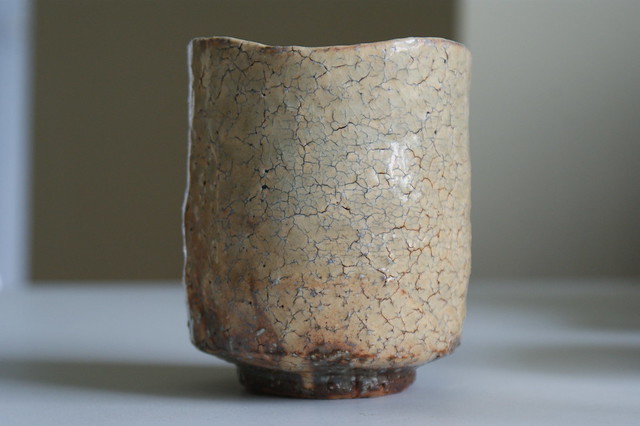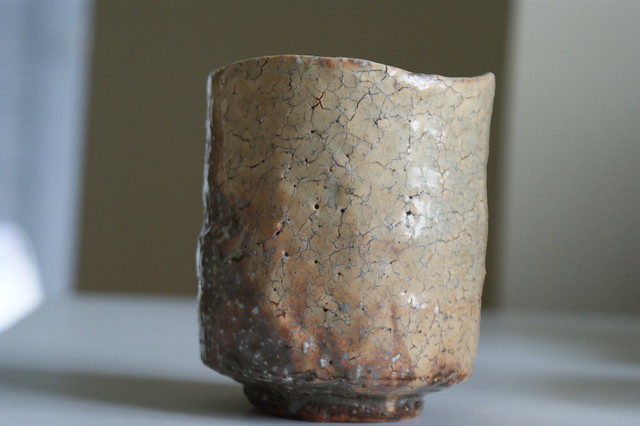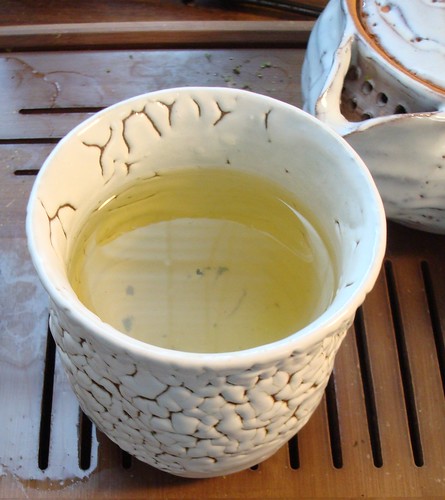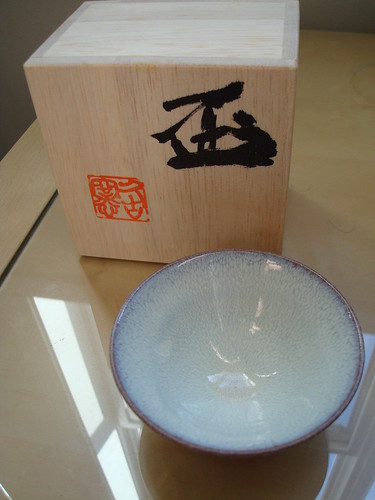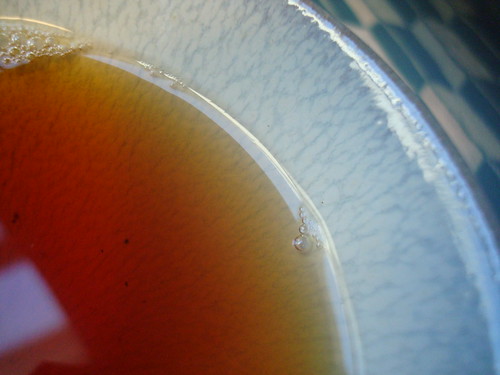
This is a special piece I purchased for my birthday this past May. Oddly fitting as I had just come from working on a wood fire, that I should buy a piece from a Japanese pottery town known for producing wonderful wood fired pieces. This piece was certainly woodfired, though it has a very minimal build up of ash, it did however smell like a bonfire for quite awhile after receiving the piece.
While guinomi are technically Sake cups, I found them nice to adapt to tea for when you want to have smaller cups of tea. This cup is going to be an additional cup for Gyokuro, though it might occasionally be used for some Chinese oolongs as well.

The most apparent features of this cup are an almost black rock like appearance, looking like it is made from volcanic rock, and just to give it an extra rugged appeal it is faceted in a spiral fashion around the cup. The nicest parts about the facets is they are rather widely spaced, giving a plethora of comfortable spots for fingers to grip the piece. Though do not let the appearance fool you this piece is rather soft and light weight.
The most interesting portion of this piece, though incredibly hard to photograph is that the interior is actually glazed with a goldish colored glaze. While an incredibly thin glaze, it really adds a little bit more of a mystery to this piece. If I had one critique about this piece, which is really just picking knits with personal preference, the foot seems unfinished to me. ( I will try and add a picture later.)
Though as part of my gyokuro set up, I now have what I call Heaven and Hell.
